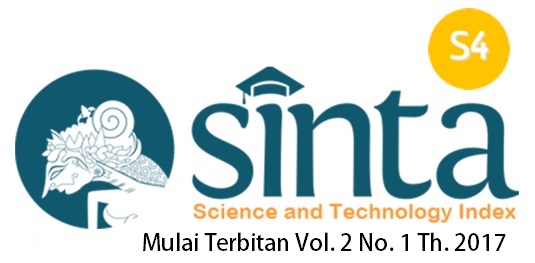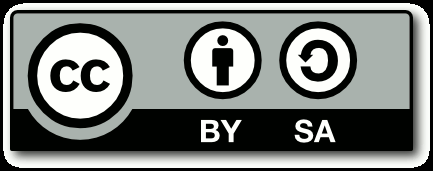Penerapan Metode SWARA untuk Menentukan Prioritas Program Pengabdian Masyarakat di Perguruan Tinggi
Abstract
Abstrak
Program pengabdian masyarakat merupakan salah satu bentuk kontribusi perguruan tinggi dalam memenuhi kebutuhan masyarakat. Namun, dalam melaksanakan program tersebut, seringkali terdapat banyak program yang diusulkan namun sumber daya terbatas. Oleh karena itu, pemilihan prioritas program pengabdian masyarakat perlu dilakukan secara efektif dan efisien. Metode SWARA (Stepwise Weight Assessment Ratio Analysis) telah digunakan sebagai salah satu pendekatan dalam pengambilan keputusan multi-kriteria yang dapat diaplikasikan dalam pemilihan prioritas program pengabdian masyarakat di perguruan tinggi. Metode ini memungkinkan pengambil keputusan untuk memberikan bobot pada kriteria-kriteria yang relevan dan mengukur nilai relatif setiap program yang diajukan. Penelitian ini bertujuan untuk menggunakan metode SWARA dalam pemilihan prioritas program pengabdian masyarakat di perguruan tinggi. Hasil penelitian ini diharapkan dapat memberikan rekomendasi prioritas program pengabdian masyarakat yang dapat membantu perguruan tinggi dalam mengalokasikan sumber daya secara optimal.
===================================================
Abstract
Community service programs are one of the forms of a university's contribution to meeting the needs of society. However, in implementing these programs, there are often many proposed programs but limited resources. Therefore, the prioritization of community service programs needs to be done effectively and efficiently. The SWARA method (Stepwise Weight Assessment Ratio Analysis) has been used as one approach in multi-criteria decision making that can be applied in prioritizing community service programs in universities. This method allows decision-makers to assign weights to relevant criteria and measure the relative values of each proposed program. This research aims to use the SWARA method in prioritizing community service programs in universities. The results of this study are expected to provide recommendations for prioritizing community service programs that can assist universities in allocating resources optimally.
Keywords
Full Text:
PDFReferences
[1] D. Stanujkic, B. Djordjevic, and D. Karabasevic, “Selection of candidates in the process of recruitment and selection of personnel based on the SWARA and ARAS methods,” Quaestus Multidisciplinary Research Journal, vol. 7, no. July, 2015.
[2] V. Kumar, K. Kalita, P. Chatterjee, E. K. Zavadskas, and S. Chakraborty, “A SWARA-CoCoSo-Based Approach for Spray Painting Robot Selection,” Informatica (Netherlands), vol. 33, no. 1, pp. 35–54, 2022, doi: 10.15388/21-INFOR466.
[3] S. Salmon and I. Arfyanti, “Penerapan Metode Simple Additive Weighting (SAW) dan SWARA dalam Pendukung Keputusan Pemilihan Penerimaan Karyawan Apoteker,” Building of Informatics, Technology and Science (BITS), vol. 4, no. 1, 2022, doi: 10.47065/bits.v4i1.1488.
[4] H. Halimah, D. Kartini, F. Abadi, I. Budiman, and M. Muliadi, “Uji Sensitivitas Metode Aras Dengan Pendekatan Metode Pembobotan Kriteria Sahnnon Entropy Dan Swara Pada Penyeleksian Calon Karyawan,” Jurnal ELTIKOM, vol. 4, no. 2, pp. 96–104, Oct. 2020, doi: 10.31961/eltikom.v4i2.194.
[5] S. Suryadi et al., “Uji Sensitivitas Metode Pembobotan ROC, SWARA Terhadap Kriteria Karyawan Terbaik Dengan Menggunakan Metode SAW,” Journal of Information System Research (JOSH), vol. 3, no. 4, pp. 532–540, Jul. 2022, doi: 10.47065/josh.v3i4.1952.
[6] A. K. Puspa and R. Nursyanti, “Sistem Pendukung Keputusan Penyakit Gizi Buruk Menggunakan Metode Simple Addictive Wheighting (SAW),” Jurnal Manajemen Sistem Informasi dan Teknologi, 2017, doi: 10.36448/jmsit.v7i1.876.
[7] A. Mardani, E. K. Zavadskas, K. Govindan, A. A. Senin, and A. Jusoh, “VIKOR technique: A systematic review of the state of the art literature on methodologies and applications,” Sustainability (Switzerland), vol. 8, no. 1. 2016. doi: 10.3390/su8010037.
[8] W. Ho, X. Xu, and P. K. Dey, “Multi-criteria decision making approaches for supplier evaluation and selection: A literature review,” Eur J Oper Res, vol. 202, no. 1, pp. 16–24, Apr. 2010, doi: 10.1016/j.ejor.2009.05.009.
[9] C. Hu and M. Xu, “Adaptive Exploration Strategy with Multi-Attribute Decision-Making for Reinforcement Learning,” IEEE Access, vol. 8, 2020, doi: 10.1109/ACCESS.2020.2973169.
[10] H. Garg and R. Arora, “A nonlinear-programming methodology for multi-attribute decision-making problem with interval-valued intuitionistic fuzzy soft sets information,” Applied Intelligence, vol. 48, no. 8, 2018, doi: 10.1007/s10489-017-1035-8.
[11] S. M. Chen and Z. C. Huang, “Multiattribute decision making based on interval-valued intuitionistic fuzzy values and linear programming methodology,” Inf Sci (N Y), vol. 381, 2017, doi: 10.1016/j.ins.2016.11.010.
[12] Z. S. Xu and Q. L. Da, “The ordered weighted geometric averaging operators,” International Journal of Intelligent Systems, vol. 17, no. 7, 2002, doi: 10.1002/int.10045.
[13] Gunawan and A. P. Nugroho, “Perbandingan Sistem Pendukung Keputusan Metode Weighted Product dan Simple Additive Weighting (Studi Kasus : Pemilihan Media Cetak sebagai Sarana Promosi di Balikpapan),” Seminar Nasional Teknologi Informasi dan Multimedia, 2018.
[14] C. Ghenai, M. Albawab, and M. Bettayeb, “Sustainability indicators for renewable energy systems using multi-criteria decision-making model and extended SWARA/ARAS hybrid method,” Renew Energy, vol. 146, 2020, doi: 10.1016/j.renene.2019.06.157.
[15] S. Hashemkhani Zolfani, M. Yazdani, and E. K. Zavadskas, “An extended stepwise weight assessment ratio analysis (SWARA) method for improving criteria prioritization process,” Soft comput, vol. 22, no. 22, 2018, doi: 10.1007/s00500-018-3092-2.
Refbacks
- There are currently no refbacks.






